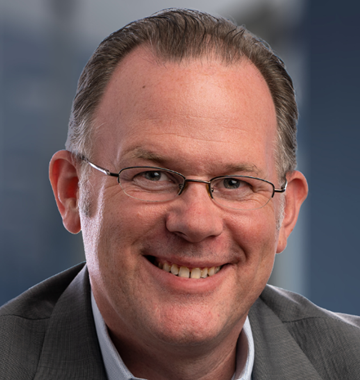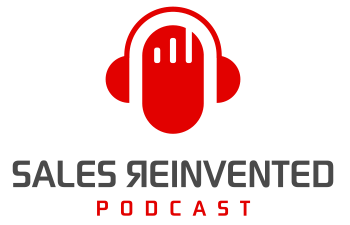Episode #371: David Fisher

Meet
David J.P. Fisher
David J.P. Fisher (also known as D. Fish) is a speaker, coach, and author of 12 books, including the best-selling Hyper-Connected Selling and Networking in the 21st Century on LinkedIn. David helps professionals understand the Sales Sherpa™ Path to compete and stay relevant. He is currently the Global Social Selling Program Lead at SAS.
Our Mission Is To Change The Negative Perception Of Sales People
Our Vision Is A World Where Selling Is A Profession To Be Proud Of
Your LinkedIn profile is your personal professional website. What do you look for when you go to a company’s website? What gives you the best first impression? What encourages you to find out more?
Whatever someone sees first makes the most impact. It’s the same on LinkedIn. We live in a digital-first world. The first time we interact with someone—or decide whether or not we want to continue to interact with someone—is online.
LinkedIn has cemented itself as the place we look for credibility. So how do you sell yourself without being salesy? How do you make connections that turn into real-world conversations? David Fisher shares his go-to strategies in this episode of Sales Reinvented.
Outline of This Episode
- [1:02] Is a compelling LinkedIn profile important?
- [2:06] What elements have the greatest impact on sales?
- [3:25] How to tell your professional story on LinkedIn
- [4:54] The balance between professionalism and personality
- [7:46] How often should you update your LinkedIn profile?
- [10:06] Tools to measure the impact of your LinkedIn profile
- [13:26] David’s top three LinkedIn dos and don’ts
- [17:34] Leverage LinkedIn to establish credibility
How to tell your professional story on LinkedIn
Think strategically. Most people look at their profile like it’s Mad Libs and just fill in the blanks. Before you embrace this faulty strategy, David encourages you to answer three questions:
- What is my business goal?
- Who is my audience?
- How do I need them to perceive me?
Once you have the answer to these questions, you’ll know what message you need to tell. If you want to be authentic and impactful, think these through. Craft a strategy to bring the answers into your profile.
The balance between professionalism and personality
Everyone has different personalities, goals, backgrounds, cultures, industries, etc. Because of this, there’s no right answer to what you “must” include in your profile. Instead, David suggests figuring out where you’re comfortable. Be authentic to you and don’t do anything you wouldn’t normally do.
Secondly, be a full human being. “Personal” doesn’t have to be vulnerable or intimate. It’s acknowledging that we’re human and do more than just our job title. Think strategically about how you want to position yourself. People know that David has two kids, gardens, and teaches Zumba on the weekends. It brings a fuller picture to the work that you do.
Tools to measure the impact of your LinkedIn profile
David admits that it’s hard to measure the impact of your profile. We often don’t recognize the power of our online presence because no one calls and says “I was thinking of doing business with you but then I saw your LinkedIn profile and I’m gonna talk to your competitor instead.” People may not admit it, but they do it every single day.
David finds generative AI promising. There are numerous tools you can leverage to create text for your profiles. David simply suggests that you take the output and use it as a draft and then add in your personality.
David’s biggest piece of advice? Your LinkedIn profile isn’t about what you want to say but what they need to hear. What information do they need to decide whether or not to engage with you? If you keep that in mind, it makes everything else easier.
David’s top three LinkedIn dos and don’ts
What are some of the rules David lives by on LinkedIn?
- Have a strategy in place: How does your profile fit into your larger business strategy? There are many ways to use LinkedIn—there is no right way.
- Ask someone else to look over your profile. It’s important to have a third party give you feedback.
- Make sure you use an up-to-date photo. Humans are visually driven and remember faces. Invest in a photographer and get a polished headshot.
- Don’t make it hard for your reader to figure out what they need to know. Your headline doesn’t need to list everything you do. Make it about who you are and how you’ll help your customers.
- Don’t oversell. Your profile is the first opportunity for someone to engage with you. Don’t give them a reason not to.
- Don’t sleep on it. Don’t ignore the importance of a polished and professional LinkedIn profile. People will do a Google search and find you. Tell the story you want and own the narrative.
You don’t need a LinkedIn profile that will get you the sale. Your LinkedIn profile is where you establish credibility as a professional. Learn more about David’s process in this episode!
Resources & People Mentioned
Connect with David Fisher
Connect With Paul Watts
Audio Production and Show notes by
PODCAST FAST TRACK
https://www.podcastfasttrack.com
Learn More About David Fisher
Are there any definitive guides or resources you recommend for crafting an effective LinkedIn profile?
Yep! My best-selling book Networking in the 21st Century on LinkedIn available on Amazon: https://www.amazon.com/Networking-21st-Century-LinkedIn-Relationships/dp/1944730168
In the realm of LinkedIn branding and sales, who do you most admire and why?
- Steve Watt: Talks the talk and walks the walk. He knows his stuff but is also incredibly authentic and generous.
- Richard von der Blom: Has done a lot to uncover the nuts and bolts of how to be effective on LinkedIn without resorting to gimmicks and annoying automation.
- Todd Caponi: Great example of a subject matter expert on selling (not necessarily LinkedIn) using LinkedIn to communicate, engage, and influence.
What are your top ten tips for someone looking to optimize their LinkedIn profile for sales – your golden advice set?” Don’t ignore it!
Create a strategy before completing your profile. Ask:
- What are my goals
- Who is my audience
- How do I want them to perceive me
Your banner image is the first first impression you will make – set the right tone for your visitor.
Your headshot needs to be polished, approachable, and consistent with the overall professional message you are sending.
The headline needs to answer the question for your reader, “Why should I keep reading your profile?”
Use the Featured section to share 3-5 multimedia assets that speak to your credibility personally or the credibility of your solution.
The About section needs to be written in the first-person. It needs to be short, concise, and to the point.
The About section is where you share your professional story in terms of what your reader will care about: be customer-centric.
Your Experience Section IS NOT YOUR RESUME. Use it to tell your professional narrative and share the skills you have acquired on the way.
All the additional sections on LinkedIn are great…if they help further tell your story. If they don’t, leave them out.
What are the primary considerations that companies should be aware of regarding their employees’ representation on LinkedIn?
The LinkedIn profile belongs to the individual. And when prospects, customers, and partners are looking for information on an employee’s profile, they are looking for that individual’s perspective. Don’t try to get the employee to “cut/paste” corporate messaging, but rather, give them the support to share their message (and by extension the company’s) in the best way they can.
Do you believe companies should provide specific training for employees to utilize LinkedIn effectively? Should this be a standard part of a salesperson’s induction/onboarding process?
Organizations should absolutely be providing guidance and training around LinkedIn profiles and online presence to new employees. New employees want to use digital tools to succeed in their roles, but many are not social media gurus or content creation experts. By giving them support you help them ramp up and find success faster.
LinkedIn is constantly evolving. Are there any new features or strategies that you’re currently delving into or recommend sales professionals should explore?
I think AI will bring a lot of changes to how we interact and engage online, but the jury is still out on how. I do think that LinkedIn (as a subsidiary of Microsoft who has invested heavily in AI) will continue to experiment with AI-integration, and it’s important to stay up-to-date on those changes.
How do you balance showcasing your hobbies and interests on LinkedIn, ensuring it complements your professional brand?
It’s important to bring some of your humanity into your profile and LinkedIn activity, but it should always be in alignment with your comfort level. One of the easiest ways is to decide upon an activity that’s not directly connected to your job title that you are OK with sharing on LinkedIn. That could be a non-profit activity, employee resource group, or an interest outside of work. And when appropriate, share something from that world on your profile or in a LinkedIn post.
For listeners eager to learn more, what’s the best way to connect with you on LinkedIn or other platforms?”
- LinkedIn! www.linkedin.com/in/iamdfish
- Or www.davidjpfisher.com
Share This Episode, Choose Your Platform!
